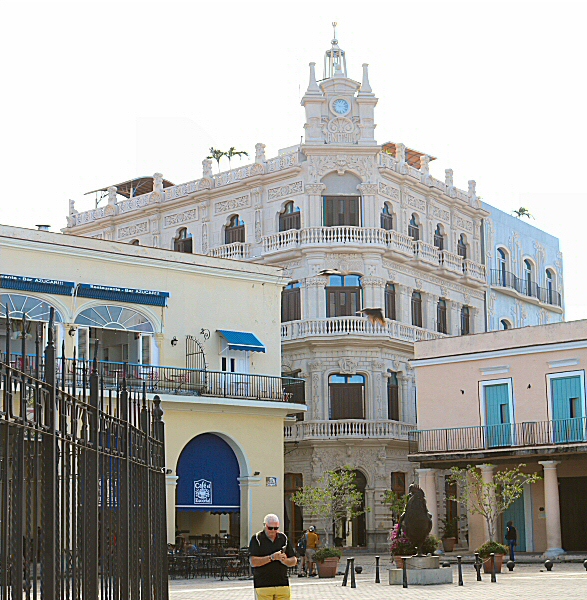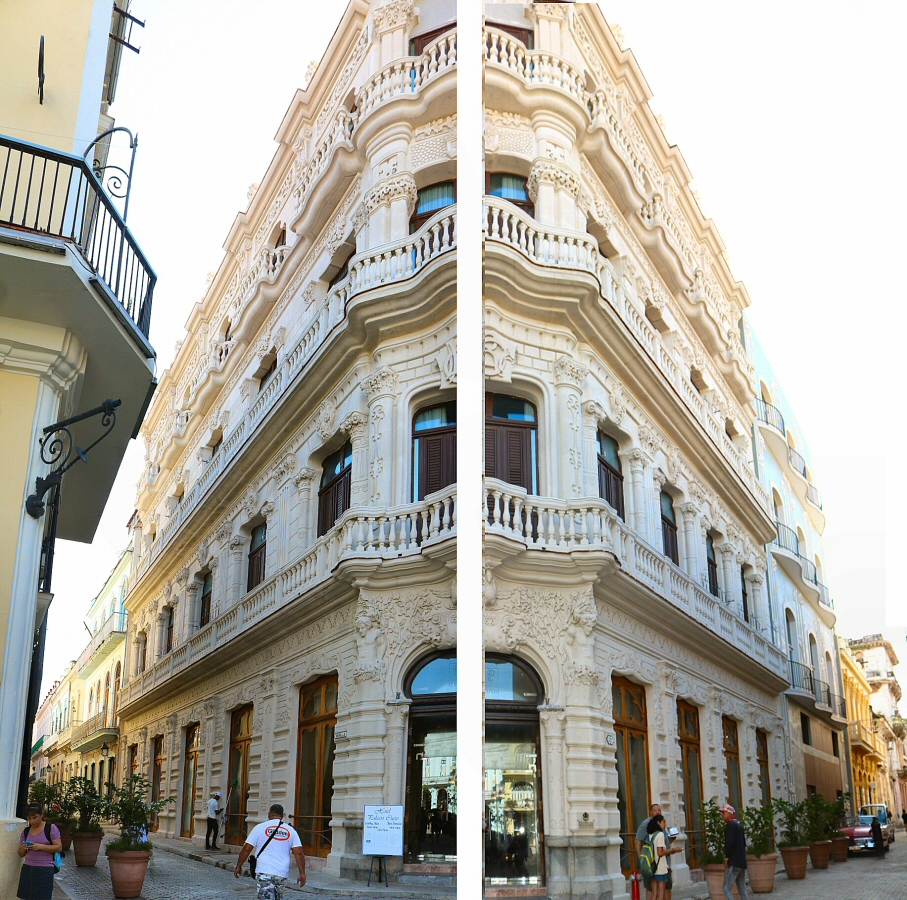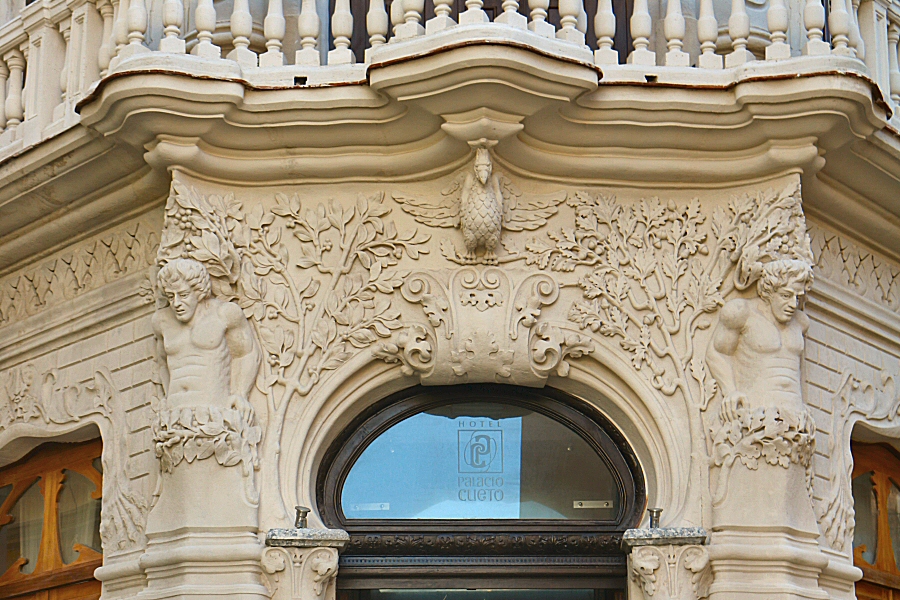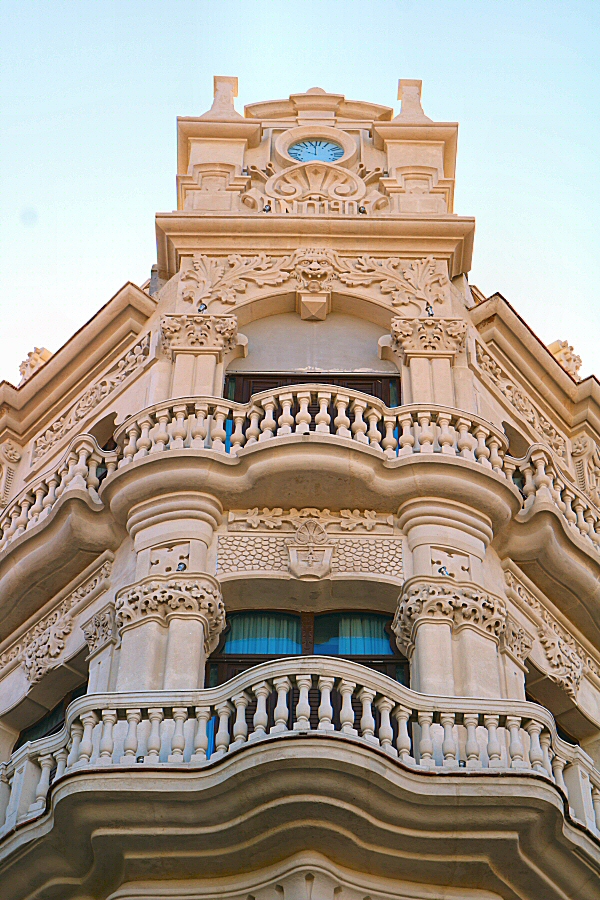


The house that was previously present
on the plot of the current Hotel Cueto, was bought by Ramón
López Fernández in 1905. Ramón had an intention to build a new
building with the ground floor being used for the storage of
merchandise. The little-known architect Arturo Marqués
undertook the construction of the building that began in
1906 and was completed in 1908. Initially it was used as a
warehouse and then as the hat shop of Ramón López y Compañía
until 1920s. In 1910 the Spanish merchant José Cueto y
Suárez rented the building. When he bought it in 1927, he
converted the building into a hotel, Hotel Palacio Viena.
The building had a beautiful pharmacy on the ground floor,
with a splendid cedar counter and outstanding wood carving.
Later, it became an apartment building. Gradually it
deteriorated and became a tenement house with a warehouse on
the ground floor towards 1990s. Since then, it was left
empty and unused until 2005 when restoration works began in
the building. Finally in 2019, it reopened its doors, now
converted into an extraordinary luxury hotel with 60 rooms
and all the services that a facility of its type demands.
Currently it is managed by the company Hoteles Habaguanex of
the Gaviota Tourism Group.
The building has a façade adorned with
griffin, satyr and other figures from Greek mythology. The
griffin is a legendary creature with the body, tail and back
legs of a lion, the head and wings of an eagle, and the
front feet the talons of an eagle. As both the animals are
considered the kings of their category, the powerful griffin
was thought of as king of all creatures. A satyr is the
member of a troop of ithyphallic (having the penis erect)
male companions of Dionysus (God of the grape harvest,
winemaking and wine, of ritual madness, fertility, theatre
and religious ecstasy in ancient Greek religion and myth).
They usually had horse-like ears and tails, as well as
permanent, exaggerated erections. The ornate façade has an
appearance reminiscent of the modernist constructions built
by some Catalan architects in Barcelona (such as
Lluís Domènech i Montaner and Josep Puig i
Cadafalch), but particularly by
the genius Antonio Gaudí y Cornet (1852-1926).
Arturo Marqués might have been inspired by the new
European trends in the early years of the 20th century in
constructing this unique modern building that is the first
and perhaps the most famous art nouveau building in Havana.
 From the mid-19th century on, a desire
for the modernity emerged in Cuba, so that the first modern
constructions began in 1883. In 1900s art nouveau was
espoused by the Cuban architects as a rejection of the
colonial style. Even though some magazines propagated the
ideas of modernity, the art nouveau did not become
widespread in Cuba. It was the art deco that took root in
Havana for its simplicity in comparison to art nouveau. The
Habana Vieja is the place that shelters the largest number
of art nouveau buildings in the capital.
From the mid-19th century on, a desire
for the modernity emerged in Cuba, so that the first modern
constructions began in 1883. In 1900s art nouveau was
espoused by the Cuban architects as a rejection of the
colonial style. Even though some magazines propagated the
ideas of modernity, the art nouveau did not become
widespread in Cuba. It was the art deco that took root in
Havana for its simplicity in comparison to art nouveau. The
Habana Vieja is the place that shelters the largest number
of art nouveau buildings in the capital.
The colossal male figures are used as
columns, as well as the female caryatids that protrude above
the arcade of the main entrance. The Greek term caryatid is
a sculpted female figure serving as an architectural support
taking the place of a column or a pillar supporting an
entablature on her head. The true architectural jewel is a
magnificent stone work with balconies in the shape of waves.
This feature reminds Gaudí’s works in that he always tried
to add the nature to his works.
The rich-ornate façade of the Hotel
Palacio Cueto that distinguishes it from all of the other
surrounding buildings, was featured in the Cuban movie Vals
Para La Habana in 1988.

The Hotel Palacio Cueto is rising over
the Plaza Vieja at its southeast corner, opposite to the east
side of the Museo de Naipes, where the Inquisidor street
intersects the Muralla street.

